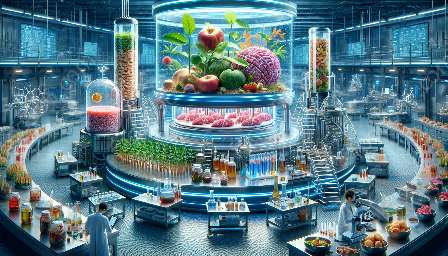Food preservation is a crucial aspect of ensuring food safety and extending the shelf life of perishable items. Two widely recognized methods for achieving this are irradiation and pasteurization. Understanding these techniques and their compatibility with biotechnological approaches is essential for enhancing food preservation through innovative methods.
Understanding Irradiation
Irradiation is a food preservation method that involves exposing food to a controlled amount of ionizing radiation. This process effectively destroys harmful bacteria, parasites, and other pathogens, thereby increasing the shelf life of the food and reducing the risk of foodborne illnesses. The irradiation process does not make the food radioactive, and it is a safe and approved method for food preservation.
Benefits of Irradiation:
- Elimination of Pathogens: Irradiation effectively eliminates harmful microorganisms, making food safer for consumption.
- Extended Shelf Life: By reducing spoilage and decay-causing organisms, irradiation can significantly extend the shelf life of various food products.
- Preservation of Nutritional Quality: Unlike some traditional preservation methods, irradiation helps preserve the nutritional content of food, maintaining its overall quality.
Irradiation and Biotechnological Approaches
Biotechnological approaches can complement irradiation by enhancing the process of identifying and targeting specific pathogens. Through biotechnological advancements, researchers and food technologists can develop improved methods for irradiation, with a focus on precision and efficiency. Additionally, biotechnology can contribute to the development of innovative packaging materials that enhance the effectiveness of irradiation and improve the overall safety and quality of preserved foods.
The Role of Pasteurization
Pasteurization is another vital technique in the realm of food preservation. This process involves heating food to a specific temperature for a predetermined period, effectively eliminating harmful bacteria and pathogens while retaining the quality of the food. Commonly used in dairy products and juices, pasteurization has been instrumental in preventing the spread of foodborne illnesses and ensuring the safety of various food products.
Advantages of Pasteurization:
- Microbial Safety: Pasteurization significantly reduces the microbial load in food, making it safer for consumption.
- Retained Freshness: By eliminating harmful bacteria, pasteurization helps maintain the freshness and quality of perishable food items.
- Uniform Preservation: Pasteurization ensures consistent preservation across different batches of food, promoting reliability and safety.
Pasteurization and Food Biotechnology
Food biotechnology plays a critical role in enhancing the effectiveness of pasteurization. Through biotechnological research, advanced methods of pathogen detection and control can be developed, further improving the safety and efficiency of pasteurization processes. Biotechnology also contributes to the development of natural preservatives and antimicrobial agents, offering sustainable alternatives to traditional preservatives and enhancing the overall preservation process.
Food Biotechnology and Preservation
Food biotechnology encompasses a wide range of innovative approaches aimed at improving food preservation. From the development of genetically modified organisms (GMOs) with enhanced resistance to pathogens to the use of advanced microbial control techniques, food biotechnology offers novel solutions for addressing preservation challenges. Additionally, biotechnological advancements have led to the creation of bio-based packaging materials that contribute to the preservation and safety of food products.
Recent Innovations in Food Biotechnology:
- Genetic Modification: Through the modification of crop plants, scientists can create varieties with improved resistance to pests and diseases, thereby enhancing the preservation of agricultural produce.
- Biopreservation: The use of natural microorganisms and their metabolic by-products for food preservation offers sustainable and eco-friendly preservation solutions.
- Packaging Innovations: Biotechnology has revolutionized food packaging, leading to the development of active and intelligent packaging solutions that help extend the shelf life of food products.
By integrating biotechnological advancements with traditional preservation methods such as irradiation and pasteurization, the food industry can achieve significant improvements in food safety, quality, and shelf life extension. The synergy between these approaches paves the way for a more sustainable and robust food preservation system.

